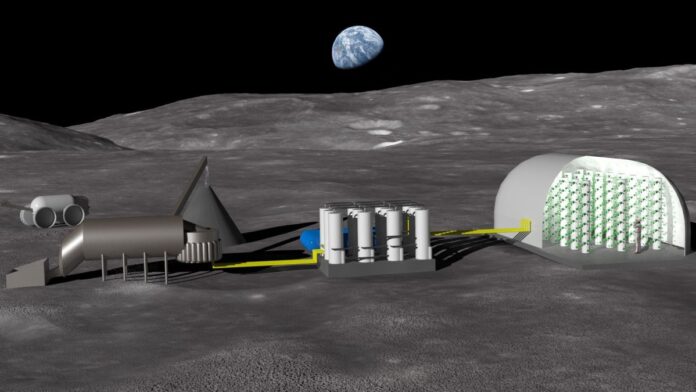A new technique for processing lunar soil may help foster plant growth on the moon in hopes for sustaining more long-term lunar missions.
The European Space Agency (ESA) and Norwegian lunar agriculture company Solsys Mining have studied ways to treat lunar soil, or regolith, to create fertilizer for growing plants. Previous experiments using lunar samples returned to Earth show plants can grow in lunar soil. However, lunar regolith lacks certain amounts of nitrogen compounds and becomes tightly compact when wet, which makes it challenging for the plants to take root and flourish.
By leveraging hydroponic farming techniques, researchers have devised a way to grow plants in nutrient-rich water instead of soil by extracting essential minerals from the regolith, according to a statement (opens in new tab) from the ESA.
Related: NASA’s Artemis program: Everything you need to know
“This work is essential for future long-term lunar exploration,” Malgorzata Holynska, ESA materials and processes engineer, said in the statement. “Achieving a sustainable presence on the moon will involve using local resources and gaining access to nutrients present in lunar regolith with the potential to help cultivate plants. The current study represents a proof of principle using available lunar regolith simulants, opening the way to more detailed research in future.”
Hydroponic farming involves feeding plant roots directly with nutrient-rich water, without the need for soil. With the help of Norway’s Geotechnical Institute and the Center for Interdisciplinary Research in Space, the researchers developed a method for separating the beneficial mineral nutrients in regolith from the bad.
In theory, the regolith would be passed through a sorter to extract and process valuable mineral nutrients, which would then be dissolved in water and fed into a hydroponic greenhouse where plants grow vertically on the moon’s surface.
The Solsys Mining team has already had success growing beans using simulated lunar highland regolith as a nutrient source, which proves hopeful for maintaining a long-term human presence on the moon, according to the statement.
Follow Samantha Mathewson @Sam_Ashley13 (opens in new tab). Follow us @Spacedotcom (opens in new tab), or on Facebook (opens in new tab) and Instagram (opens in new tab).

